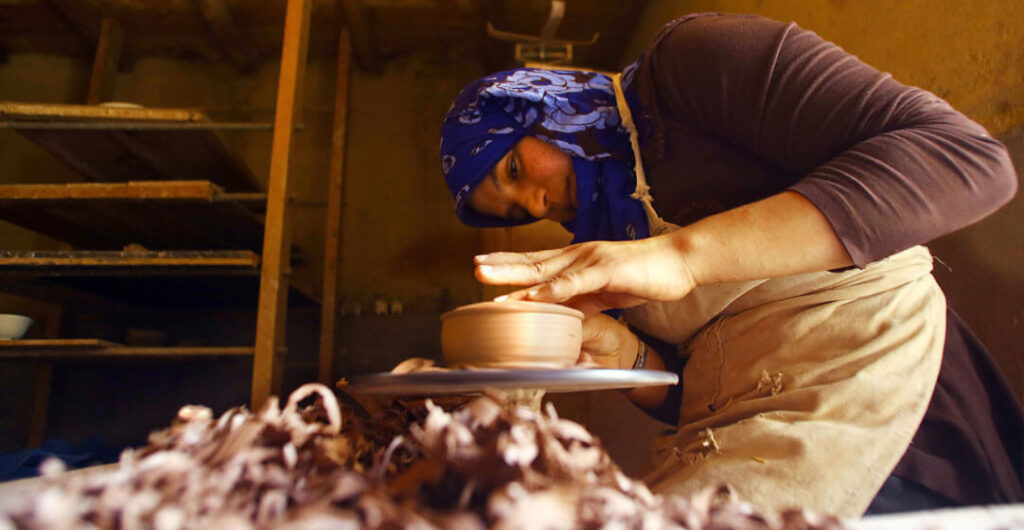Go Beyond the Pyramids with a Native Guide
Sometimes you must distance yourself to rediscover why you fell in love in the first place.
I visited Cairo in 2004 — fresh out of college and looking for fun in the land my parents left for America decades earlier. I found family, love, work and so much beauty in the following 13 years until I returned to the Seattle area with my wife and two daughters amid political unrest.
In 2021, we ignored the politics, took every possible precaution against COVID-19 and returned for a vacation. We’d been gone for four years. We’re no longer locals, but we’re not foreigners either. We certainly were in a better place mentally to experience Egypt.
There’s so much more to Egypt than the pyramids. There are pristine white-sand, turquoise-water beaches, mountains that sometimes get dusted with snow, salt-water desert lakes, coral reefs that attract divers from around the world, and well-preserved footprints of dozens of civilizations that have settled along the banks of the Nile for thousands of years. But the single most distinguishing element, the one that will stick with you and keep you coming back, is the people.
Their kindness will warm your heart. Their perseverance will inspire you. Their generosity will leave you speechless.

Around Cairo
Wherever you’re staying, catch the sun rising at any spot along Egypt’s 900-mile Red Sea coast, as it emerges over Mount Catherine in the Sinai Peninsula, blankets serene farming lands lining the Nile from Alexandria to the border with Sudan or flashes between British colonial-era buildings in Cairo. There’s something about the sunrise that makes 100 million people put centuries of inherited hardship behind them and believe for a moment that today will be better than the last.
If you’re in central Cairo, take a walk around Tahrir Square, then hop on Qasr El Nil Bridge across the Nile to the island of Zamalek. Low-hanging fog might obscure your view, but only add to the magic of empty streets that within an hour will be crowded with people and vehicles. In the hot summer months, shopkeepers toss water on the sidewalks in hopes of stealing a degree. You are greeted with a smile and “Sabah el fol” — one of several Egyptian “good morning” expressions affectionately adopted throughout the Arab world for its reference to a type of local jasmine.
Stroll a little farther. Radios playing recorded Quran recitals reflect the significant role faith plays in the lives of this country’s inhabitants. The solemn verses infuse melody and peace into the controlled chaos of this city. Peek into side streets. People huddle around food carts serving beans, falafel, eggs and homemade potato chips. They’re everywhere, and their pace is frantic. Ask for recommendations and choose wisely. Street food can be inconsistent, but it might be the best breakfast you’ve ever had. Check out El Gahsh in El Sayeda Zeinab neighborhood just south of Tahrir Square. It started as a food cart before growing into a restaurant known around the city for its delicious offerings.

Great Pyramids of Giza
It’s good you caught sunrise because a trip to the Great Pyramids of Giza calls for an early start. It’s best to arrive when the gates open at 7 a.m. in the summer and an hour later in the winter. You see those magnificent structures rise over the horizon, the oldest of the Seven Wonders of the Ancient World.
Even in the summer months, the early morning desert breeze helps cool you down. If you fancy a camel- or horseback ride, there are plenty around. But be forewarned, their owners often employ high-pressure sales behaviors. Either let your tour guide deal with them or counter with a friendly but firm response.
Within minutes, you’re on the plateau overlooking the pyramids of Khufu, Khafre and Menkaure, or Cheops, Chephren and Mykerinos in Greek. Walk up to them. Touch their towering limestone blocks. Take a deep breath.

Beach Hopping
Straddling the northeastern corner of Africa, Egyptian beaches give visitors rare dual access to the white-sand shores of the Mediterranean and to vast coral reefs in the Red Sea that houses some of the world’s most diverse marine ecosystems.
A few days out on the country’s 650-mile-long North Coast along the Mediterranean will likely account for the biggest expense on your trip. Resorts along that stretch are relatively few, with most developers choosing to build luxury housing that caters to wealthy visitors locally and from around the region. If you do end up at one of those 5-star facilities, expect to be pampered with gourmet meals and spa experiences so serene you’ll think time has stopped. On the beach, your feet sinks into soft sand, and the water is warm and clear.
The Red Sea offers much more variety in terms of accommodations, activities and nightlife, giving visitors a more affordable and entirely different experience within a few hours drive from the North Coast. Towns like Sharm El-Sheikh and Hurghada offer dining and entertainment attractions that are popular with tourists from Europe and the Middle East year-round. If you’re looking for a more off-track experience, try driving out an hour or two, where you’ll step back into the minimalist tranquility of beach-side campsites, nighttime barbecues and bonfires operated by hosts whose generosity reflects their Bedouin culture.

Western Desert
As far as the eye can see, miles of white sand stretches until seamlessly blending into the celeste-colored sky. Your mind tells you that you have reached the proverbial middle of nowhere, but you don’t want to leave.
The air is dry. The breeze is only perceptible by the cool sensation it creates as sweat beads evaporate from your skin. The silence is absolute.
This is the eastern edge of Egypt’s Western Desert. About a 90-minute drive southwest from Cairo is Faiyum, in an area archeologists believe humans first settled at least 10,000 years ago. It’s surrounded by dozens of villages where about 4 million people sustain lush farms that stretch eastward all the way to the Nile and giant salt-water lakes to the west.
Where you stand now, in the middle of the desert, used to be the bottom of the sea some 40 million years ago. You’re here not only for the serenity and natural views. You’re headed to Wadi al-Hitan, Arabic for Whale Valley. Well-preserved skeletons of four-legged whales were discovered there in the early 1900s, showing the aquatic mammal’s transition from a land-based animal. Your tour guide drops you off at Magic Lake for a dip in its crystal-clear waters to cool off. Camping under the starriest of night skies is also a possibility here.
Back from a day trip after a shower and an authentic Egyptian fried-pigeon dinner, you stay up for hours lost in thought by a pit fire and endless cups of sweet black tea prepared by your hosts at Lazib Inn in Faiyum’s Tunis Village.
You’re not the first to fall in love with this place. In the mid-1970s a Swiss pottery artist by the name of Evelyne Porret came here. She was so enamored by its people that she chose to settle among them, opening a school to teach the craft that would reshape Tunis’ economy and turn it into a unique tourist destination.
Today, pottery shops line the village’s colorful alleys. Almost all the shops are owned by students of the woman locals affectionately call Madame Evleen.When she died at her home in the village in June last year, the entire town shut down for three days of mourning. They don’t remember her as a foreigner. She was one of them, and a mother figure for many.
Egyptians love proverbs, one of which — elli khallef ma matsh — translates to: He who gave birth hasn’t died. Look around Tunis. Madame Evleen lives on.
It’s funny, we never thought of visiting Faiyum when we did live in Egypt. The beaches, the countless ancient ruins, even the sunrises I speak so fondly of now were relegated to background-instrument status in the hectic soundtrack of everyday life.
Last year, I returned to learn to accept all of Egypt’s beautiful and unflattering sides. I can see clearly now what made me fall in love with it in the first place.
—Written by Ahmed Namatalla
—Top photo is of Wadi Al Hitan or Whale Valley in Fayoum, Egypt. Photo by B.O. Kane/Alamy
—This article appears in the 2022 Fall Edition of AAA Washington’s member magazine, Journey.









